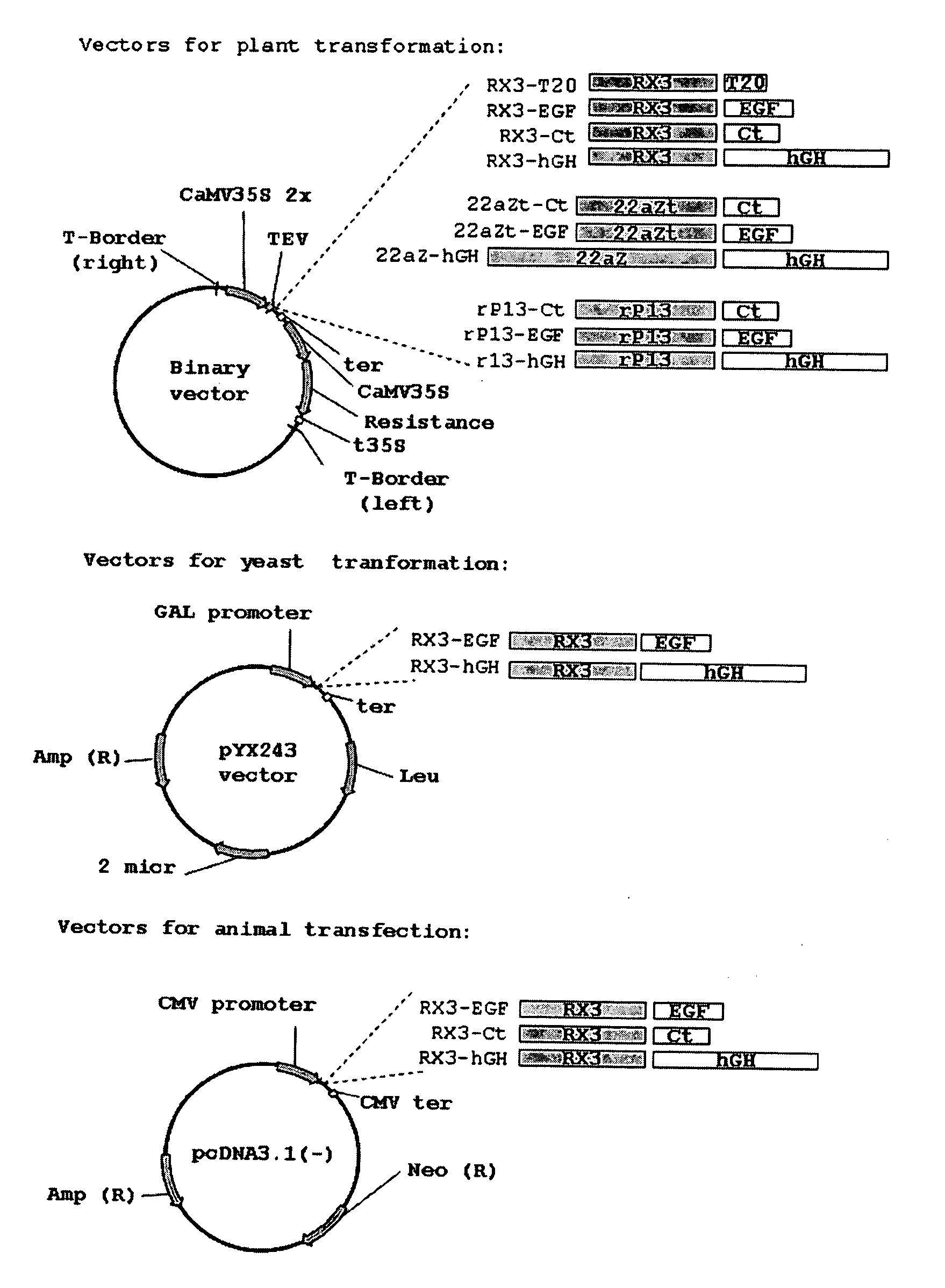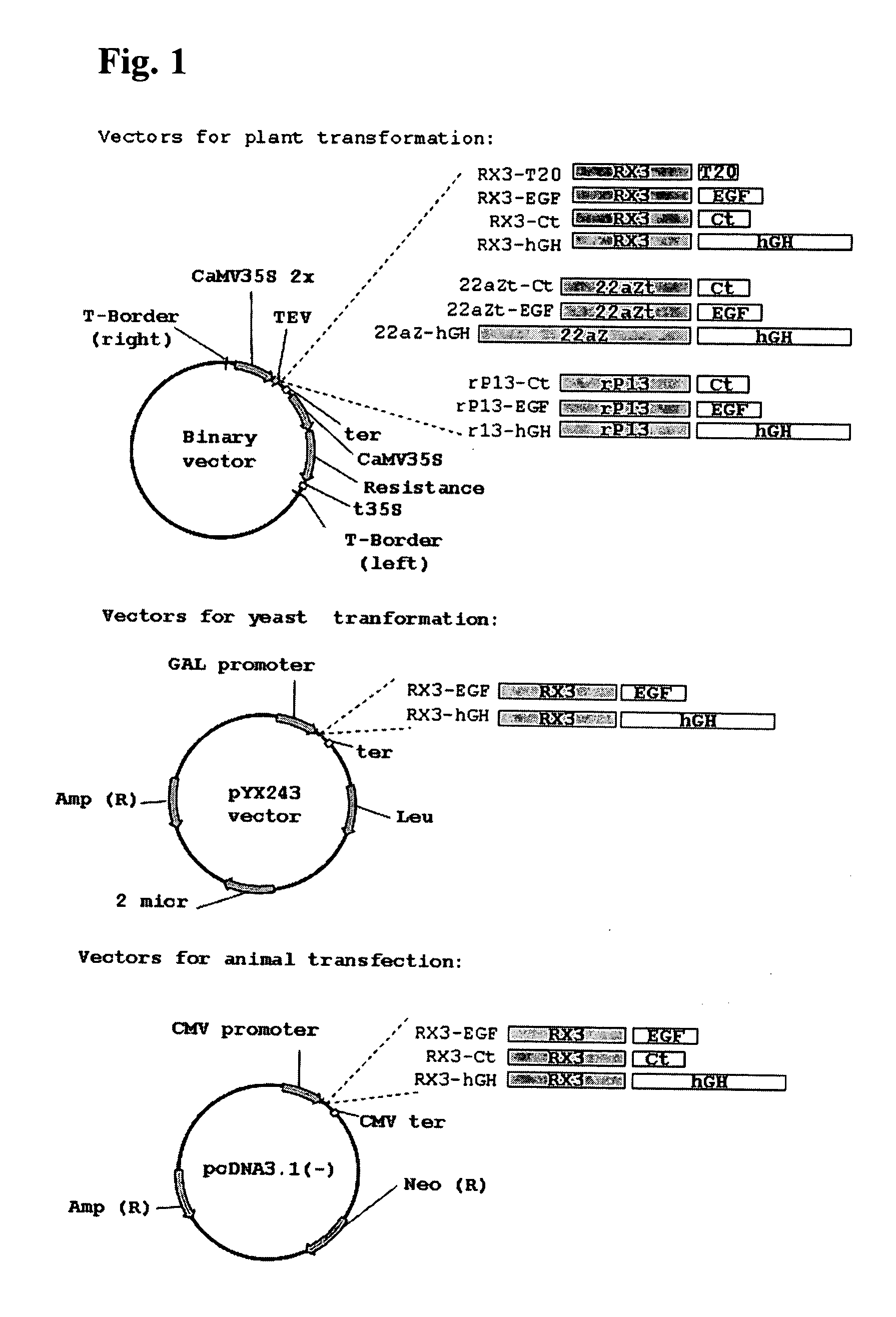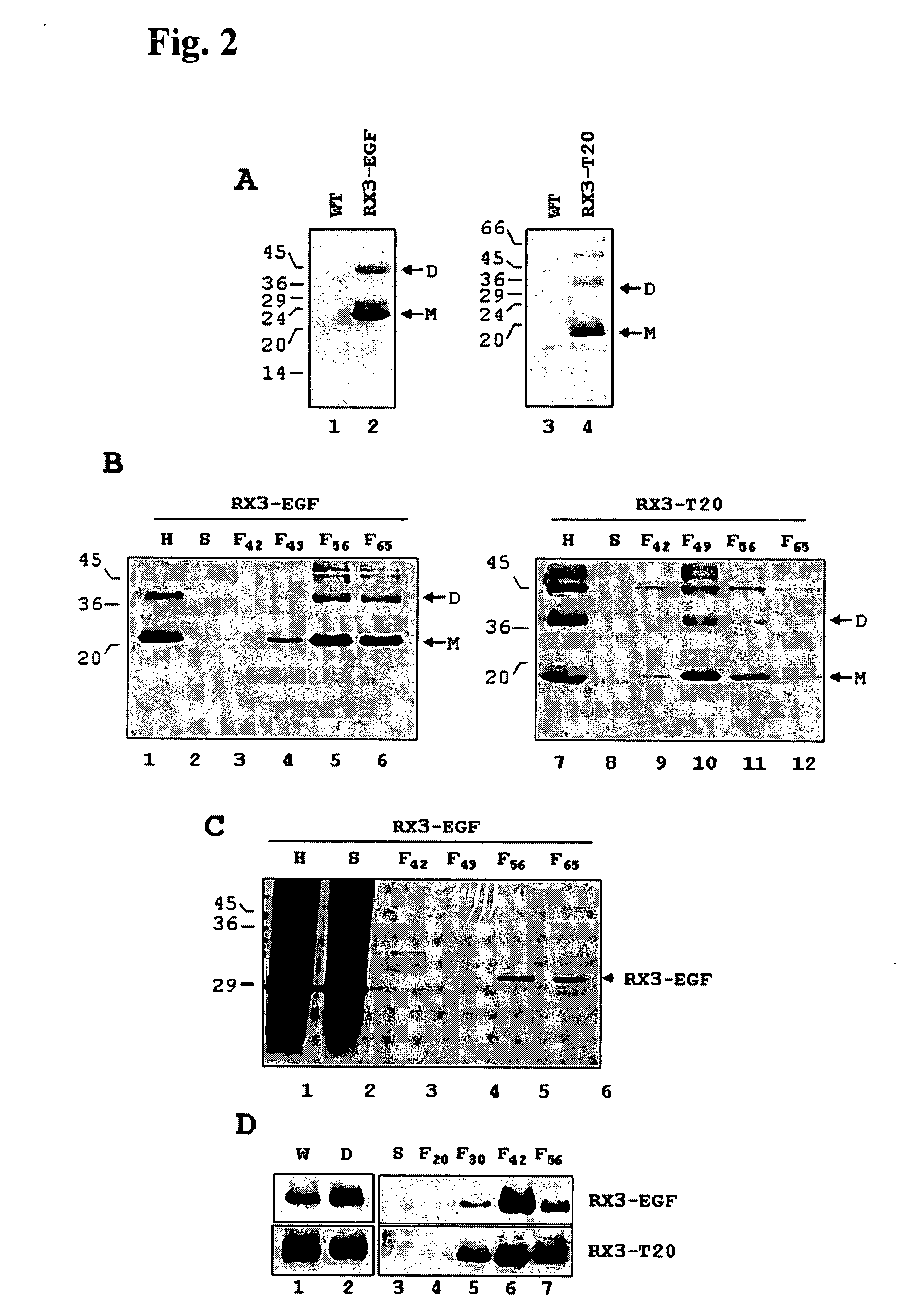Protein isolation and purification
a technology of protein and purification method, applied in the direction of peptides, plant/algae/fungi/lichens ingredients, fungi, etc., can solve the problems of poor expression level of secretions, product instability, need for more research regarding downstream processing, etc., to achieve enhanced concentration, enhanced concentration, and reliable and reproducible
- Summary
- Abstract
- Description
- Claims
- Application Information
AI Technical Summary
Benefits of technology
Problems solved by technology
Method used
Image
Examples
example 1
Plasmid Construction for Plant Transformation
[0088] The coding sequences of T20 and human epidermal growth factor (hEGF) were obtained synthetically and were modified in order to optimize its codon usage for expression in plants.
[0089] The first strand of the cDNA sequence encoding the 36 amino acids of T20 was obtained by chemical oligonucleotide synthesis, and the sequence corresponding to the Factor Xa specific cleavage site and enzyme restriction site were added at 5′ end of the sequence. This synthetic construction was purified by polyacrylamide denaturing gel.
SEQ ID NO: 265′ CATGGGCATTGAAGGTAGATATACTTCCCTTATTCATTCACTGATCGAAGAGTCTCAGAACCAACAAGAGAAGAATGAGCAAGAACTCCTTGAGCTGGACAAGTGGGCTTCTTTGTGGAACTGGTTCTGATAAG 3′
[0090] The double-stranded cDNA was obtained by PCR using specific T20 primers containing restriction sites for further cloning.
[0091] Primers:
V20Forward5′CATGCCA TGGGC ATTGAAGGTAG-3′SEQ ID NO: 27V20Reverse5′CGCGGATCCTTATCAGAACC AGTTCCACA-3′SEQ ID NO: 28
[0092] The ...
example 2
Plasmid Construction for Animal and Yeast Cell Transformation
Animal Cells
[0118] The synthetic gene corresponding to the mature calcitonin sequence (Ct, WO2004003207) and EGF sequences as well the cDNA encoding the hGH were fused to the RX3 N-terminal gamma-zein coding sequence (patent WO2004003207) and were introduced into the vector pUC18. SalI-BamHI restriction fragments from the pUC18 derived plasmids pUC18RX3Ct, pUC18RX3EGF and pUC18RX3hGH, containing the corresponding fusion protein RX3-Ct, RX3-EGF and RX3-hGH sequences, were introduced in the vector pcDNA3.1—(Invitrogen) restricted with Xho I-Bam HI. In the resulting constructs named p3.1RX3CT, p3.1RX3EGF and p3.1RX3hGH, the fusion protein sequences were under the CMV promoter and the terminator pA BGH.
Yeast Cells
[0119] SalI (blunt ended)—BamHI restriction fragments from the pUC18 derived plasmids described above, containing the corresponding fusion protein RX3-EGF and RX3-hGH sequences were introduced in the vector pYX2...
example 3
Host Transformation
[0120] The Saccharomyces cerevisiae strain leu2) was transformed with the plasmid constructs c117 and c118 by the LiAc method (Ito et al. 1983, J. Bacteriol. 153:163-168) and transformants were selected on Leu− plates. Expression analyses were made by growing the transformants in a galactose-containing medium.
Plant Material
[0121] Tobacco (Nicotiana tabacum var. Wisconsin) plants were grown in an in vitro growth chamber at 24-26° C. with a 16 hour photoperiod. Adult plants were grown in greenhouse between at 18-28° C., humidity maintained between 55 and 65% with average photoperiod of 16 hours.
[0122] Plantlets for Agroinfiltration (Vaquero et al., 1999 Proc. Natl. Acad. Sci., USA 96(20):11128-11133; Kapila et al., 1997 Plant Sci. 122:101-108) method were grown from seeds for 4-6 weeks in the in vitro conditions described above.
Tobacco Stable Transformation
[0123] The binary vectors were transferred into LBA4404 strain of A. tumefaciens. Tobacco (Nicot...
PUM
| Property | Measurement | Unit |
|---|---|---|
| density | aaaaa | aaaaa |
| diameter | aaaaa | aaaaa |
| diameters | aaaaa | aaaaa |
Abstract
Description
Claims
Application Information
 Login to View More
Login to View More - R&D
- Intellectual Property
- Life Sciences
- Materials
- Tech Scout
- Unparalleled Data Quality
- Higher Quality Content
- 60% Fewer Hallucinations
Browse by: Latest US Patents, China's latest patents, Technical Efficacy Thesaurus, Application Domain, Technology Topic, Popular Technical Reports.
© 2025 PatSnap. All rights reserved.Legal|Privacy policy|Modern Slavery Act Transparency Statement|Sitemap|About US| Contact US: help@patsnap.com



